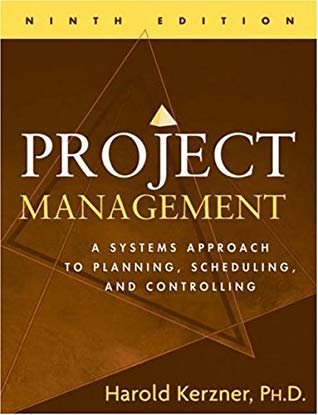src
History
In the 1970s and 1980s, the software industry grew very quickly, as computer companies quickly recognized the relatively low cost of software production compared to hardware production and circuitry. To manage new development efforts, companies applied the established project management methods, but project schedules slipped during test runs, especially when confusion occurred in the gray zone between the user specifications and the delivered software. To be able to avoid these problems, software project management methods focused on matching user requirements to delivered products. The first method introduced for Software Management was Water fall method.
As the industry has matured, analysis of software project management failures has shown that the following are the most common causes.
- End-user Involvement was Insufficient
- The communication between end-users and developers and the project manager was poor
- Unrealistic or unarticulated project goals
- Inaccurate estimates of the required needed resource
- Use of technology was Immature
- No techniques were discovered for risk analysis.
- Poor reporting of the project's status
- Badly defined or incomplete system requirements and specifications and many more.

src
What is project?
A project is a series of tasks that need to be completed in order to reach a specific outcome. A project can also be defined as a set of inputs and outputs required to achieve a particular goal. Projects can range from simple to complex and can be managed by one person or a hundred
A project is a temporary endeavor undertaken to create a unique product, service, or result. The temporary nature of projects indicates that a project has a definite beginning and end. The end is reached when the project’s objectives have been achieved or when the project is terminated because its objectives will not or cannot be met, or when the need for the project no longer exists. A project may also be terminated if the client (customer, sponsor, or champion) wishes to terminate the project.
Temporary does not necessarily mean the duration of the project is short. It refers to the project’s engagement and its longevity. Temporarily does not typically apply to the product, service, or result created by the project; most projects are undertaken to create a lasting outcome. For example, a project to build a national monument will create a result expected to last for centuries. Projects can also have social, economic, and environmental impacts that far outlive the projects themselves
Every project creates a unique product, service, or result. The outcome of the project may be tangible or intangible. Although repetitive elements may be present in some project deliverables and activities, this repetition does not change the fundamental, unique characteristics of the project work. For example, office buildings can be constructed with the same or similar materials and by the same or different teams. However, each building project remains unique with a different location, different designs, different circumstances and situations, different stakeholders, and so on.
A continuous work exertion is commonly a redundant procedure that pursues an association's current systems. Conversely, as a result of the one of a kind sort of tasks, there might be vulnerabilities or contrasts in the items, administrations, or results that the task makes. Task exercises can be new to individuals from an undertaking group, which may require more devoted arranging than other routine work. Moreover, ventures are embraced by any means of hierarchical levels. A task can include a solitary individual or various people, a solitary authoritative unit, or different hierarchical units from various associations
A project can create:
- A product that can be either a component of another item, an enhancement of an item, or an end item in itself
- A service or a capability to perform a service (e.g., a business function that supports production or distribution)
- An improvement in the existing product or service lines e.g., A Six Sigma project undertaken to reduce defects
- A result, such as an outcome or document (e.g., a research project that develops knowledge that can be used to determine whether a trend exists or a new process will benefit society)
Examples of projects include
- Developing a new product, service, or result;
- Effecting a change in the structure, processes, staffing, or style of an organization;
- Developing or acquiring a new or modified information system (hardware or software);
- Conducting a research effort whose outcome will be aptly recorded;
- Constructing a building, industrial plant, or infrastructure;
- Implementing, improving, or enhancing existing business processes and procedures and many more.
The Relationships between Portfolios and Projects.
The connection between portfolios, projects, and ventures is with the end goal that a portfolio alludes to an accumulation of undertakings, programs, sub-portfolios, and activities oversaw as a gathering to accomplish vital targets. Projects are gathered inside a portfolio and are included subprograms, tasks, or other work that are overseen in a planned manner on the side of the portfolio.
Individual extends that are either inside or outside of a program are still viewed as a component of a portfolio. In spite of the fact that the activities or projects inside the portfolio may not really be associated or straightforwardly related, they are connected to the association's key arrangement by methods for the association's portfolio. Authoritative procedures and needs are connected and have connections among portfolios and programs, and among projects and individual ventures.
Authoritative arranging impacts the tasks by methods for venture prioritization dependent on hazard, financing, and different contemplations significant to the association's vital arrangement. Hierarchical arranging can coordinate the administration of assets, and backing for the segment extends based on chance classifications, explicit lines of business, or general kinds of undertakings, for example, framework and procedure improvement.
#2 A Guide To Project Management - What is Project Management?
Continued ....
